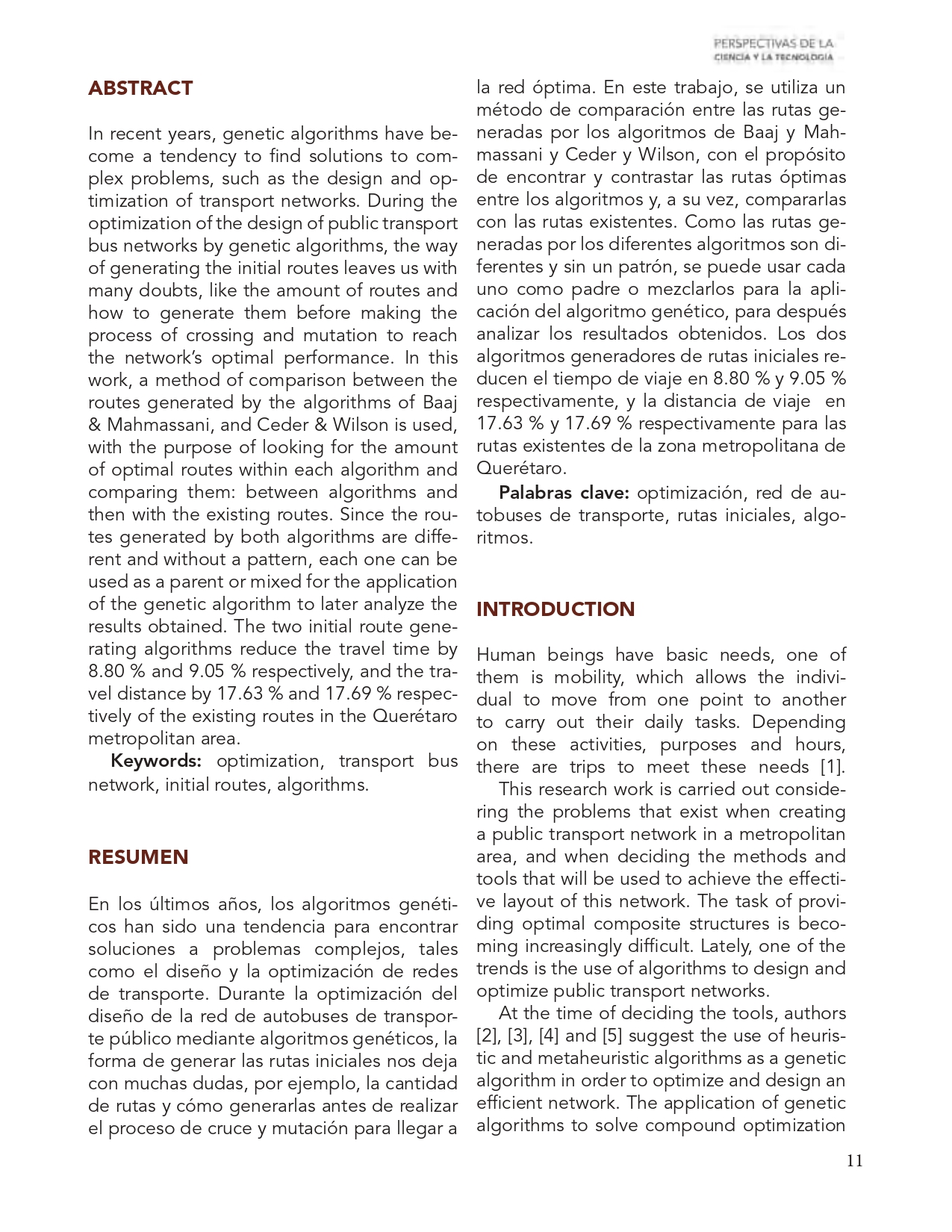Abstract
In recent years, genetic algorithms have become a tendency to find solutions to complex problems, such as the design and optimization of transport networks. During the optimization of the design of public transport bus networks by genetic algorithms, the way of generating the initial routes leaves us with many doubts, like the amount of routes and how to generate them before making the process of crossing and mutation to reach the network’s optimal performance. In this work, a method of comparison between the routes generated by the algorithms of Baaj & Mahmassani, and Ceder & Wilson is used, with the purpose of looking for the amount of optimal routes within each algorithm and comparing them: between algorithms and then with the existing routes. Since the routes generated by both algorithms are different and without a pattern, each one can be used as a parent or mixed for the application of the genetic algorithm to later analyze the results obtained. The two initial route generating algorithms reduce the travel time by 8.80 % and 9.05 % respectively, and the travel distance by 17.63 % and 17.69 % respectively of the existing routes in the Querétaro metropolitan area.
This work is licensed under a Creative Commons Attribution-NonCommercial 4.0 International License.

